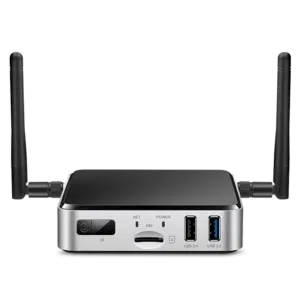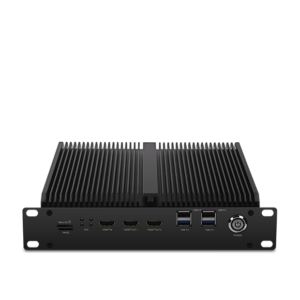A Comprehensive Manual to Deploying AI on Edge Devices
A Comprehensive Manual to Deploying AI on Edge Devices
Blog Article
Real-World Applications of AI on Edge Devices
Real-World Purposes of AI on Edge Products
Synthetic intelligence (AI) is no longer confined to the realm of big, centralized data centers. Because of breakthroughs in engineering, side devices today play an integral position in deploying AI right wherever knowledge is generated. But what does AI on edge units mean, and how come it making this type of thrill? Here, we'll examine how arm edge ai runs in actuality through edge units and uncover its wide range of practical applications.

What's AI on Side Products?
AI on side products identifies deploying artificial intelligence formulas on products like smartphones, cameras, drones, or IoT sensors. These units do not require use of centralized servers for processing information; as an alternative, they accomplish examination and decisions locally, creating the method faster, more efficient, and usually more secure.
The "edge" here just identifies research performed close to or at the origin of information technology, as opposed to depending on the cloud. That shift is driven by the demands for real-time data processing and the necessity to minimize latency, enhance privacy, and minimize bandwidth usage.
Critical Real-World Programs of Side AI
1. Intelligent Monitoring
AI-powered cameras equipped with face recognition, movement recognition, and anomaly recognition are transforming monitoring systems. Edge products in this domain can analyze movie streams in real-time to recognize suspicious activities, remove false alarms, and enhance community safety. For instance, AI algorithms may identify uncommon actions and attentive authorities quickly without the need to deliver movie data to a central host for analysis.
2. Healthcare Monitoring
Wearable units and lightweight medical equipment are leveraging ai m.2 module for controlling wellness information more efficiently. Edge-based AI in devices like health trackers and smartwatches monitors users' vitals, such as for instance heart rate, air degrees, or blood force, in real-time. These systems analyze data locally and offer quick feedback, paving the way in which for faster treatment during emergencies.
Beyond wearables, sophisticated medical imaging units equipped with on-device AI can discover signs of diseases like cancer, allowing earlier in the day diagnoses even yet in distant places without internet connectivity.
3. Autonomous Cars
Self-driving cars are among probably the most well-known samples of side AI in action. With devices, cameras, and LiDAR techniques helping as knowledge places, AI computations get position onboard these cars to produce split-second decisions. From finding pedestrians and obstacles to moving city roads, edge AI ensures that the automobile runs easily and efficiently. The real-time control capability of side units reduces the reliance on high-latency cloud systems, ensuring security in life-critical scenarios.
4. Retail Analytics
Side products in retail conditions are helping corporations analyze consumer behavior. Smart shelves and AI-equipped cameras may detect client preferences, monitor supply, and actually customize in-store activities in actual time. The data developed from these units helps retailers produce knowledgeable decisions, improve client satisfaction, and improve stock management.

5. Professional IoT
Factories and industrial plants are adopting side AI to revolutionize their monitoring and automation processes. AI-powered sensors on machinery find potential problems long before they cause costly failures. Predictive preservation pushed by edge AI decreases downtime, promotes production, and guarantees protection on the manufacturing floor.
6. Individualized Activities in Consumer Devices
Your smartphone is a prime example of how edge AI personalizes person experiences. Functions such as for instance voice assistants, flexible camera controls, and on-device language translation use real-time AI to react to user needs without sending sensitive information to external servers. This fosters equally ease and privacy for the conclusion user.
The Rising Affect of Side AI
The ownership of AI on edge units remains to spike, pushed by industries' raising need for low-latency, real-time computing, and better data privacy. Their programs are reshaping industries ranging from healthcare and automotive to public safety and retail. By placing AI's energy nearer to wherever information is made, side units aren't just increasing efficiency but also showing the limitless possible of creativity in the current linked world. Report this page